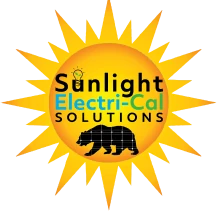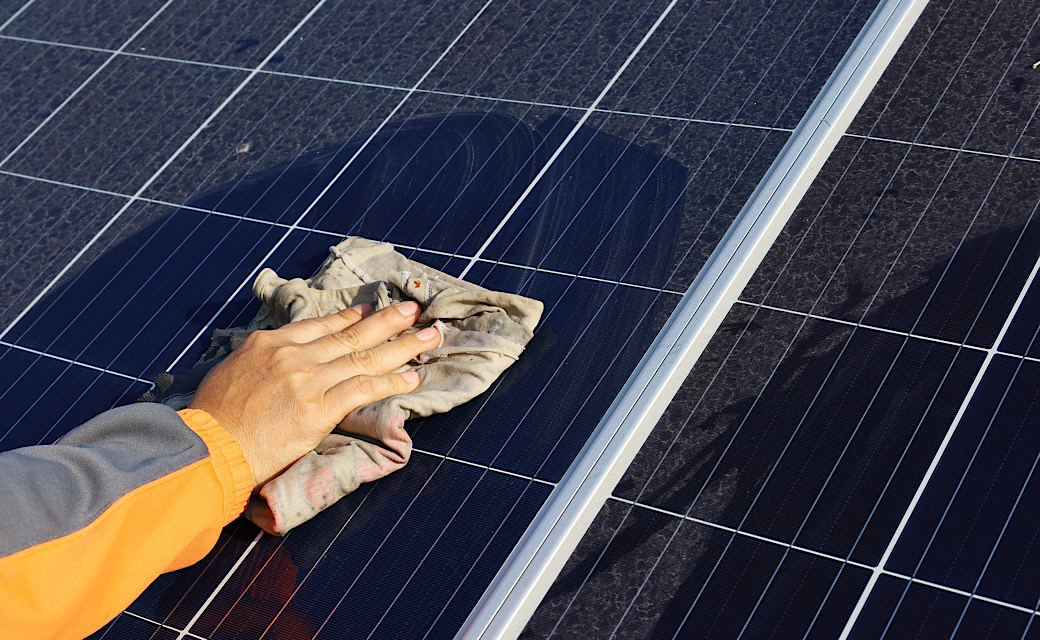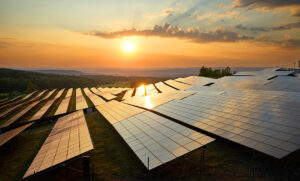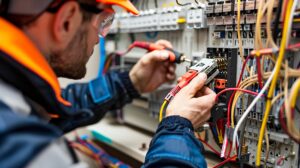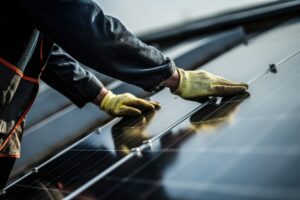As the new year approaches, it’s an ideal time for homeowners and businesses to perform maintenance on their solar energy systems. Proper care ensures that solar panels continue to operate at peak efficiency, helping you maximize energy output and savings throughout the year. Regular maintenance not only prolongs the life of your solar system but also ensures you’re getting the best return on your investment. At Sunlight Electrical Solutions, serving Dublin, CA, we recommend taking a few steps to prepare your solar system for the year ahead. From simple cleaning to performance checks, here are some essential tips to keep your solar panels running efficiently.
Inspect and Clean Your Solar Panels
One of the easiest but most important tasks you can do to prepare your solar system for the new year is to inspect and clean your solar panels. Dust, dirt, leaves, and other debris can accumulate on the surface of the panels over time, blocking sunlight and reducing their efficiency.
Tips for Cleaning Your Solar Panels:
Use purified water to gently clean the surface of the panels. Avoid using harsh chemicals or abrasive materials that could damage the glass surface.
If panels are accessible, a garden hose connected to a purified camping water filter can be used to wash away any loose debris. Be sure to use low pressure to avoid damaging the panels.
For stubborn dirt or bird droppings, a soft-bristle brush or a non-abrasive sponge can help remove the buildup without scratching the panels.
If your solar panels are difficult to access (such as on a steep roof), or if you’re unsure about cleaning them yourself, consider hiring a professional to do the job safely and efficiently.
Clean panels ensure that sunlight can reach the photovoltaic cells unobstructed, improving the system’s overall energy production. In places like Dublin, CA, where the climate is generally mild but prone to dust and debris from trees, regular cleaning can significantly improve performance.
Perform a Visual Inspection of Your Solar System
In addition to cleaning, it’s important to visually inspect the entire solar system for any signs of wear, damage, or obstruction. Solar panels are durable, but weather conditions, animals, or debris can occasionally cause issues that may go unnoticed.
What to Look for During Inspection:
Inspect the panels for any cracks, chips, or damage to the glass surface. Even small cracks can affect the system’s efficiency, allowing moisture to enter and potentially damage internal components.
Check the wiring connections to ensure they are secure and intact. Loose or damaged wires can disrupt the flow of electricity and reduce the system’s performance.
Inspect the mounting hardware to ensure the panels are securely attached to the roof or ground. Loose or damaged mounts can lead to shifting panels, which may affect their orientation and efficiency.
Ensure there are no new obstructions (such as growing trees, leaves, or debris) casting shadows on the panels, as shading can significantly reduce solar production.
By performing a thorough visual inspection, you can catch minor issues before they become major problems, ensuring the longevity and efficiency of your solar energy system.
Monitor System Performance with Solar Monitoring Tools
Many modern solar energy systems come equipped with monitoring software that tracks performance and alerts you to potential issues. The new year is a perfect time to review this data and ensure your system is operating as expected.
Benefits of Solar Monitoring:
Monitoring tools allow you to track your system’s energy production and consumption patterns. You can compare data from previous months or years to identify any drops in efficiency or output.
If your solar system experiences any performance issues, such as a panel malfunction or inverter problem, the monitoring tool will alert you, allowing you to address the issue promptly.
By reviewing your solar energy production data, you can optimize energy use in your home or business. For example, running energy-intensive appliances during peak solar production hours can help reduce reliance on grid electricity.
If you’re not currently using monitoring software, consider adding it to your solar system in the new year. Many tools are available that can be easily integrated with existing systems, offering real-time performance tracking and insights.
Schedule an Inverter Check
The inverter is a crucial component of your solar system, responsible for converting the direct current (DC) electricity generated by your solar panels into alternating current (AC) electricity, which can be used by your home or business. Inverters typically have a lifespan of 10 to 15 years, so it’s important to periodically check their performance and efficiency, especially if your system is aging.
Signs Your Inverter May Need Attention:
If your energy output has dropped significantly despite clear skies and clean panels, it could indicate an inverter issue.
Many inverters have indicator lights or screens that show error messages when there is a problem. Regularly checking these indicators can help you identify any issues early.
If your inverter is making strange noises or feels unusually hot, it could be a sign that it’s malfunctioning and may need professional inspection or replacement.
If you notice any of these issues, consider scheduling a professional inverter check or replacement as part of your year-end maintenance routine.
Review Your Energy Consumption and Adjust for the New Year
The new year is an excellent time to evaluate your energy consumption and make adjustments to maximize the benefits of your solar system. Changes in your household or business operations may mean adjustments are needed to optimize your energy use.
Ways to Optimize Energy Use:
Plan energy-intensive tasks, such as running appliances, heating, or cooling, during peak solar production hours to reduce reliance on grid power.
Consider installing smart home devices that allow you to automate energy use. For example, smart thermostats and lighting systems can help reduce energy consumption when solar production is low.
If your solar system isn’t paired with a battery storage system, consider adding one. Energy storage allows you to save excess solar power generated during the day for use at night or during cloudy periods, reducing dependence on grid electricity.
By reviewing your energy habits and making adjustments, you can maximize your solar system’s potential and further reduce utility costs.
Plan for Future Upgrades and Expansions
As solar technology continues to advance, upgrading or expanding your solar energy system can help increase efficiency and savings. The new year is a great time to assess whether your current system meets your needs or if you could benefit from adding new features.
Consider These Upgrades:
Adding a battery storage system allows you to store excess solar energy for use during peak demand times or grid outages, increasing your energy independence.
If your energy needs have increased or you have additional roof space, consider adding more panels to boost your system’s capacity. Expanding your system can further reduce your reliance on the grid and increase savings.
Smart inverters offer advanced features such as grid interaction and power optimization, which can help you make the most of your solar energy production.
Consult with a solar professional to evaluate whether upgrades or expansions could improve the performance and efficiency of your system in the new year.
Stay Informed About Solar Incentives and Policy Changes
Finally, it’s important to stay up-to-date with any changes to solar incentives and policies that may affect your system in the upcoming year. Federal, state, and local governments often update their programs, offering new incentives or adjusting existing ones.
Key Programs to Monitor:
The 30% federal tax credit remains in effect through 2032, allowing you to deduct a portion of your solar installation costs from your taxes. Stay informed about any updates or changes to this program.
Many states, including California, offer additional incentives for solar installation or battery storage systems, such as the Self-Generation Incentive Program (SGIP). These programs can provide substantial rebates for adding solar storage or upgrading your system.
By keeping up with solar policy changes, you can take advantage of new incentives and ensure your system remains compliant with local regulations.
Start the New Year with a Well-Maintained Solar System
Regular maintenance and preparation of your solar energy system are crucial to ensuring its longevity and efficiency. As we move into the new year, taking the time to clean, inspect, and optimize your system will pay off in the form of increased energy production and reduced utility bills. At Sunlight Electrical Solutions, we’re here to help you with all your solar system needs, from routine maintenance to system upgrades and expansions. Contact us today to schedule an inspection or consultation and start the new year with confidence in your solar system’s performance.
